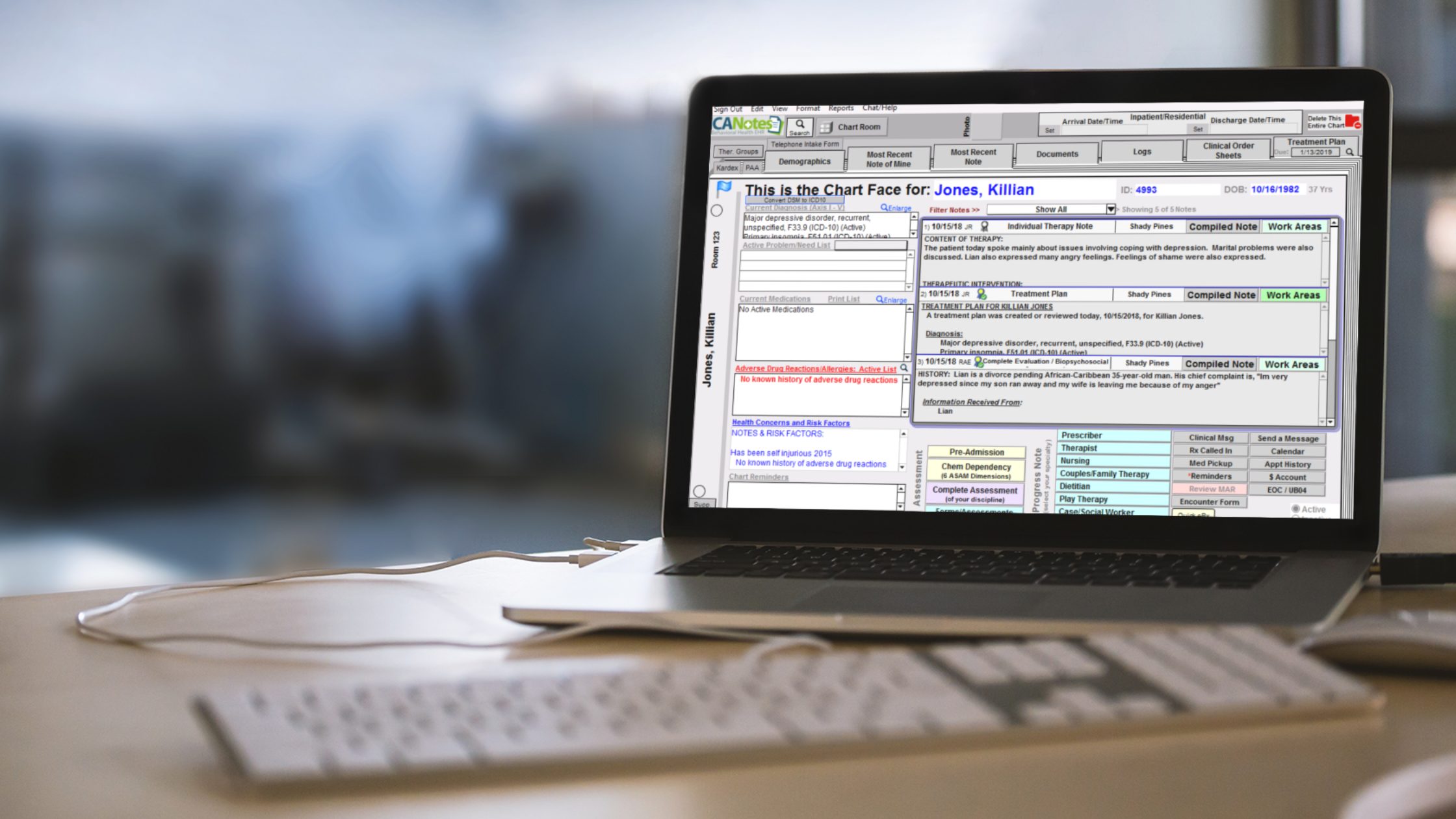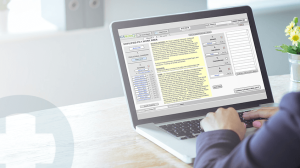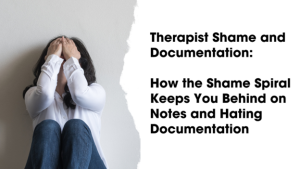BIRP Notes Guide for Mental Health Professionals
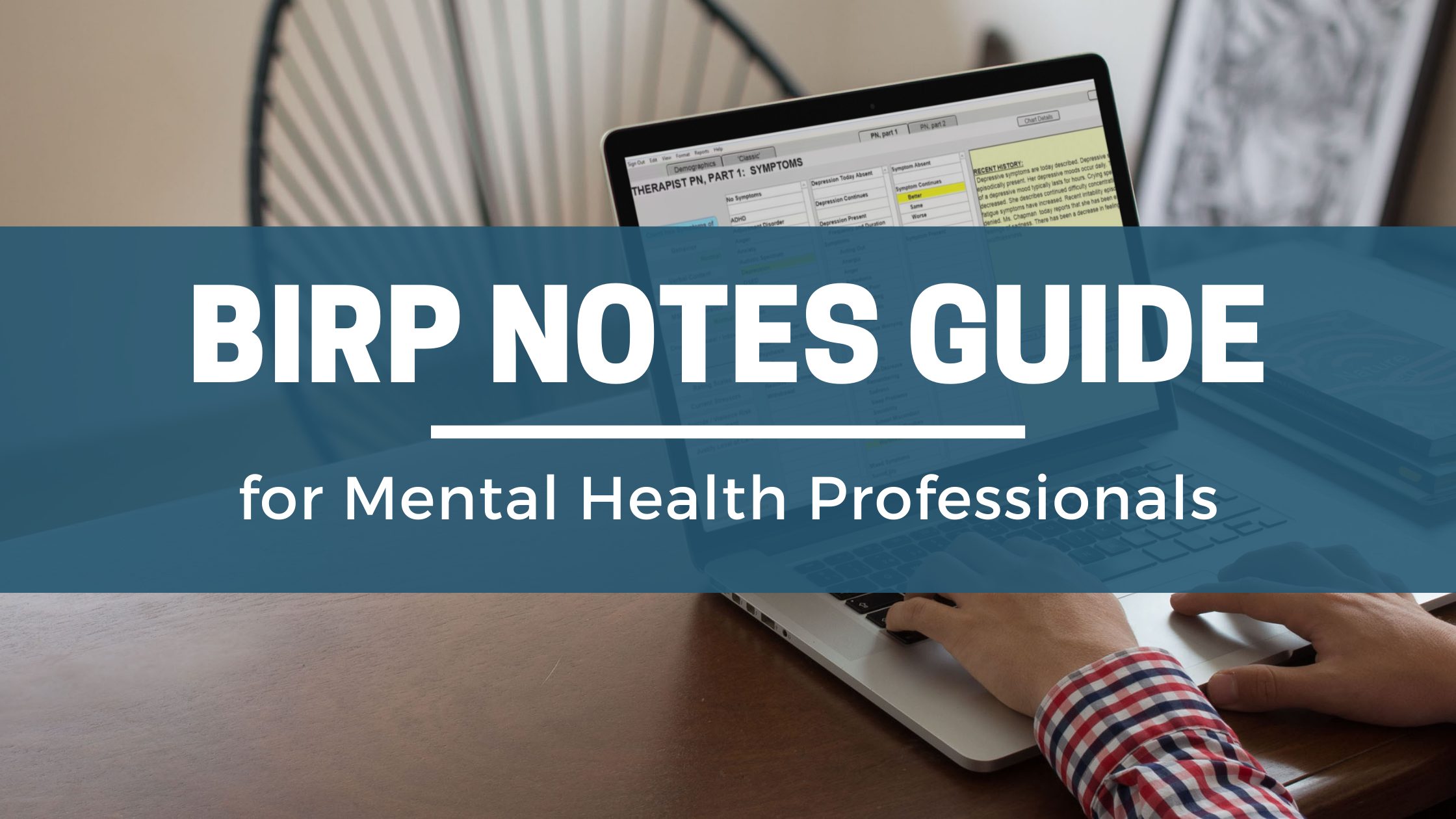
As a mental or behavioral health professional, you understand how much work goes into writing good notes. Thorough yet concise notes can be challenging to create on top of seeing clients and managing a caseload.
The BIRP note format can make this process much more efficient for busy mental health professionals. All clinicians ranging from psychiatrists to family therapists can benefit from writing BIRP notes.
Find out what BIRP notes are and how to write them so you can start creating efficient mental health notes. Review our sample BIRP notes and download our BIRP Notes template and reference guide.
Table of Contents
BIRP Notes Template
There are many elements to writing good BIRP notes, which can make it easy to forget important information. Download our free BIRP Notes Template as a quick reference guide.
BIRP notes can be an extremely effective way to communicate with other behavioral health professionals while complying with regulations and requirements set in place to ensure proper care.

What Is a BIRP Note?
BIRP notes are a format mental health professionals use to document their clients' progress and treatment plans. BIRP is an acronym used to help clinicians organize their notes into four specific sections — Behavior, Intervention, Response, and Plan.
This consistent method of writing notes is widely accepted for its standard format. This consistency makes the BIRP notes template an important resource for communicating client information with other healthcare providers.
Why are BIRP Notes Important?
BIRP notes are a type of clinical record that helps ensure clients receive continuous care, especially if they change providers or see multiple specialists.
Timely updates to records provide everyone involved with the most accurate information to make their care decisions. This updated information makes reviewing notes more convenient for providers, as well as ensures the safety of the client.
Imagine a psychiatrist prescribes their client medication and forgets to make a note of the prescription in the BIRP note. If the client sees another specialist, the new provider will have no knowledge of the medication.
This miscommunication can lead to providers over-medicating clients or prescribing medications that can potentially react with each other and cause negative side effects for the client.
Proper documentation is also critical in case you get audited or your notes need to be used in a court proceeding. Documentation of appointments with clients is required in most states, and BIRP notes are an effective way to help you comply with requirements.
How are BIRP Notes Used?
Most forms of progress notes are used to streamline the note-writing process, and BIRP notes are no different. Standardized forms of documenting clinical records like BIRP, DAP, or SOAP makes note writing fast so providers can spend more time with clients.
BIRP notes also make reading notes simple so providers can communicate a client's progress and plan with other clinicians. While one of the most important uses for BIRP notes is to track a client's progress, they can also be used for insurance reimbursement, billing and planning.
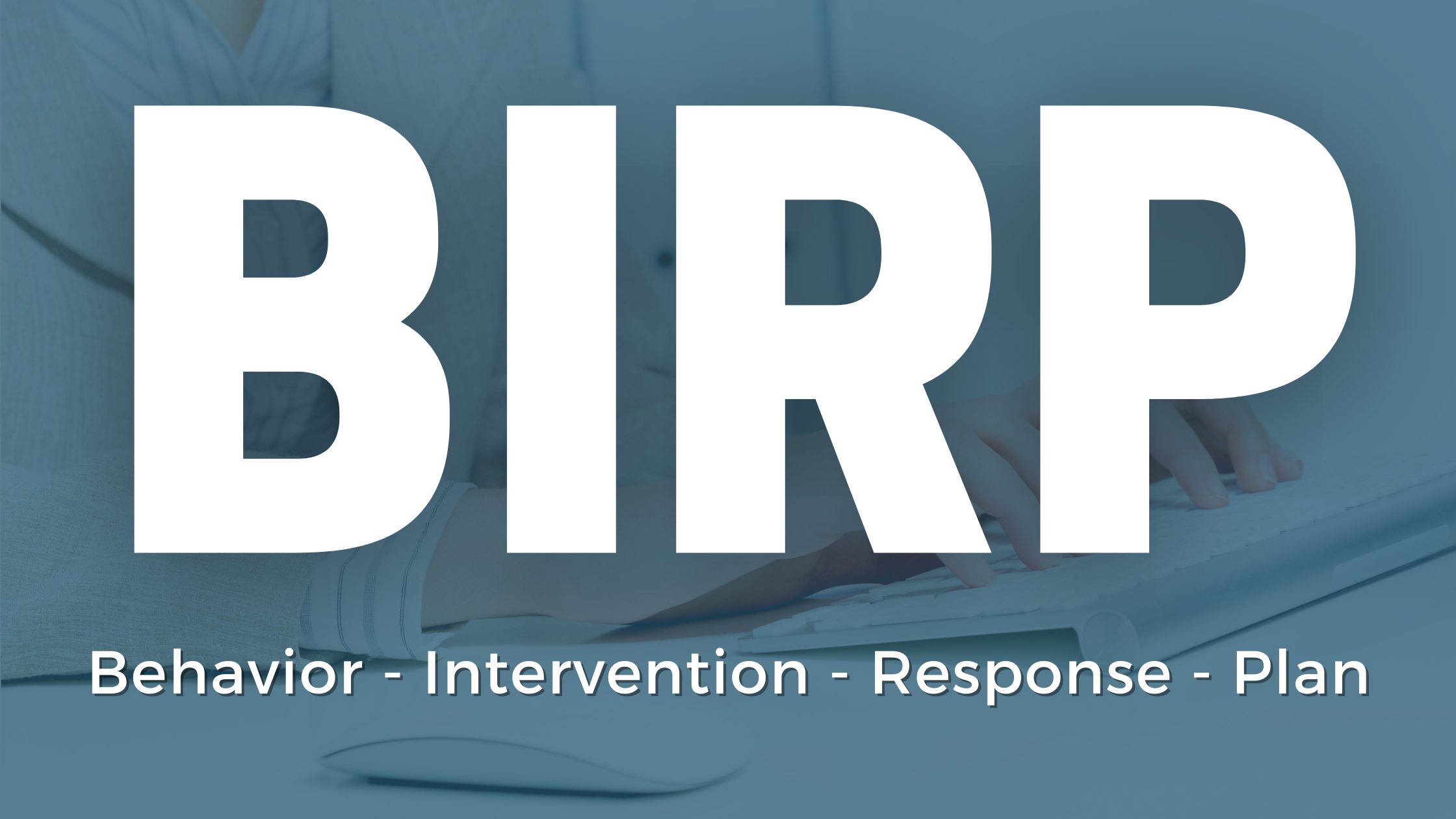
Writing BIRP Notes
BIRP notes consist of four main elements — Behavior, Intervention, Response, and Plan. The standard format for BIRP notes allows mental health professionals to write high-quality notes at an efficient rate.
This way of organizing clinical data helps ensure client care is consistent and all important information is documented properly. To better understand what to include in each category, let's dive into the individual elements of BIRP notes.
Behavior
The behavior section of a BIRP note is where you record the problem being presented, how the client appears and behaves and your impressions of the client during the appointment. Record both subjective and objective observations in this section:
- Subjective observations are anything the client reports feeling, their thoughts and opinions, as well as symptoms they may experience. Subjective notes are often recorded as direct quotes from the client.
- Objective observations come from the provider's point of view. Note the client's appearance, how they acted and what kinds of signs they presented.
Does the client seem frustrated or unwilling to participate? Did they do their homework or make an effort toward progress? Make a note of actions like hesitation to respond to prompts or enthusiasm toward activities. While it can be tempting to record everything the client says, limit yourself to relevant observations so your notes are concise and focused.
Intervention
The first section of a BIRP note is dedicated to the client and the intervention section shifts to a strong focus on the counselor's methods for intervention.
This section of your note is where you should outline and record the methods you use to help the client reach their objectives and goals of treatment. The intervention section should be a detailed account of what you did as the mental health professional during the session.
Include documentation of questions you asked and your reasoning for asking them, intervention techniques you used, and your decisions to adjust the treatment plan if necessary. Use verbs to show what you actively did to work with the client. Consider using these 10 verbs in your BIRP notes:
- Encouraged
- Validated
- Role-played
- Reviewed
- Supported
- Reinforced
- Modeled
- Prompted
- Recommended
- Taught
Noting which general category of intervention techniques the methods you applied in an appointment fall under can also be helpful. For example, you may list cognitive behavioral therapy, art therapy, or other relevant methods.
Response
Next, you'll want to record your client's response to the interventions you chose during the specific session and to the therapy as a whole. Document what they said and the way they reacted.
How do they feel about the techniques used? Here, you can note their responses to your questions and questions they may have asked regarding the intervention.
Try to be as detailed as possible in the response section of your BIRP notes.
Be specific about what bothered or excited the client and what their immediate reactions were. You can use direct quotes here to ensure the description is accurate.
If the client changes their mind about a therapy, document the change in your notes.
Plan
In the final section of BIRP notes, plan for your next session with the client. Provide the date and time the appointment is scheduled for as well as what you will focus on. The plan section allows you to base your future appointments on the progress you make during each session.
Your plan for the next session and the treatment plan as a whole will depend on:
- What you uncover during sessions
- The level of determination the client demonstrates
- Whether or not their goals have changed
Document what will happen next for both you and the client. Did you assign any homework for your client to complete before the next session? Plan to review it next time. What techniques will you use in the next appointment?
If you make any changes to the overall treatment plan, make a note of the changes and the reasoning for the decision.
Sample BIRP Notes
When written correctly, BIRP notes are an effective tool to use in the behavioral health field. Of course, good note writing comes with practice. Referencing relevant BIRP notes samples can also be helpful. Let's take a look at a few sample BIRP notes on depression and other mental health cases.
1. Psychotherapy
Imagine you're treating a client diagnosed with depression. Your notes for a regularly scheduled individual therapy appointment might look like a more detailed version of this:
- Behavior: The client reports continued negative thoughts and problems sleeping because of depression. Since our last session, my client recorded getting about 4-5 hours of sleep per night. During today's session, the client appears fatigued and in a depressed mood. "I'm desperate for some relief."
- Intervention: Practiced relaxation and breathing techniques. Replaced negative thoughts like, "I can't do anything right" to, "It's OK to make mistakes, and I do things right frequently."
- Response: The client willingly practiced breathing and relaxation techniques. The client was able to visualize peaceful places. Although there was some difficulty identifying negative thoughts, the client was able to replace them with more positive phrases.
- Plan: The client will practice the new techniques to relax before going to bed and track the hours of sleep per night. Next week, we will focus more on replacing negative thoughts.
This example provides a clear account of the techniques the provider offered to the client and how they plan to use them between sessions. There is also a clear focus set in place for the next appointment.
2. Psychiatry
Two months ago, you diagnosed a young patient at a psychiatric treatment center with bipolar disorder. At that appointment, you prescribed her medication to help with her mood swings. Today, the patient has returned for a follow-up appointment. This sample BIRP note might look like this:
- Behavior: "I've been taking my medicine as you prescribed, but I don't think it's working." The patient is visibly upset after reporting a long depressive episode since the last appointment.
- Intervention: Discussed and recommended a support group for patients battling similar mental health conditions. Encouraged the continued use of medication.
- Response: The patient displayed extreme apprehension toward a support group. "I don't want people to know."
- Plan: The patient is to research support groups and read about the positive outcomes that can come from going, as well as continue the prescribed medication. The next appointment will be spent discussing how the patient can accept the state of their mental health and reevaluating the medication strength.
In this case, the patient must give the medication more time to see results. In the meantime, you'd want to help the patient find a support system so they feel less isolated and give them ways to come to terms with their condition.
3. Group Therapy Settings
Although a bit more time-consuming than in an individual therapy session, BIRP notes can also be used in group therapy settings. Group therapy sessions include multiple clients with different conditions, and they all need their own notes for each session. BIRP notes can make the note writing process simpler to quickly jot down notes for each client. Just be sure to collect:
- Subjective and objective observations, signs and symptoms
- Methods you used and how you prompted the clients
- Their responses and behaviors toward your methods and questions
- Time and place of the next session as well as topics for discussion
Despite being a lot to juggle in group therapy sessions, BIRP notes are still essential for tracking client progress in group therapy settings.
How to Write BIRP Notes Faster
Aim for 2 to 3 Sentences
Set a Timer
Use ICANotes
Even though writing detailed notes is an essential part of the behavioral health profession, it's often one of the most time-consuming processes. This can take valuable time away from treating clients or patients. So, how can you streamline the BIRP note writing process? Consider these tips for writing faster BIRP notes:
- Aim for two to three sentences per section: The BIRP template is already ideal for concision, and limiting yourself to a few sentences in each section can help speed up the process. Unless something significant happens during your client's session, a few sentences will be sufficient.
- Set a timer: Try giving yourself a time limit. Set a timer to your goal note-writing time and see if you can complete a single session note within the time frame. If you find yourself needing more time, determine what you spend a significant amount of time on and try to reduce the time spent there. For example, if you consistently find you're spending the most time writing the behavior section, you might try writing quick notes during the session to jog your memory later.
- Use ICANotes EHR software: Electronic health records (EHR) like ICANotes can significantly reduce the time you spend writing your mental health notes. ICANotes software features time-saving buttons and templates like BIRP to make note writing more efficient.
Implement BIRP Note Documentation With ICANotes
With ICANotes, documenting your BIRP notes can be done in less than five minutes. Our note templates and other practice management features were created with mental and behavioral health professionals in mind.
With highly intuitive and robust software like ICANotes, you'll create better notes in less time. We can help make your job simpler and give you more time to spend with clients.
For more information about our software, contact our professional team today. If you're interested in trying ICANotes, request a free trial to try it for yourself!
